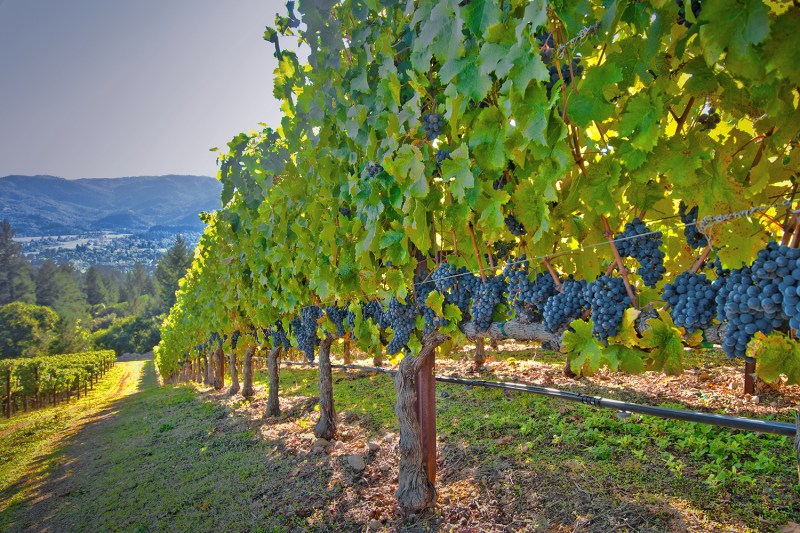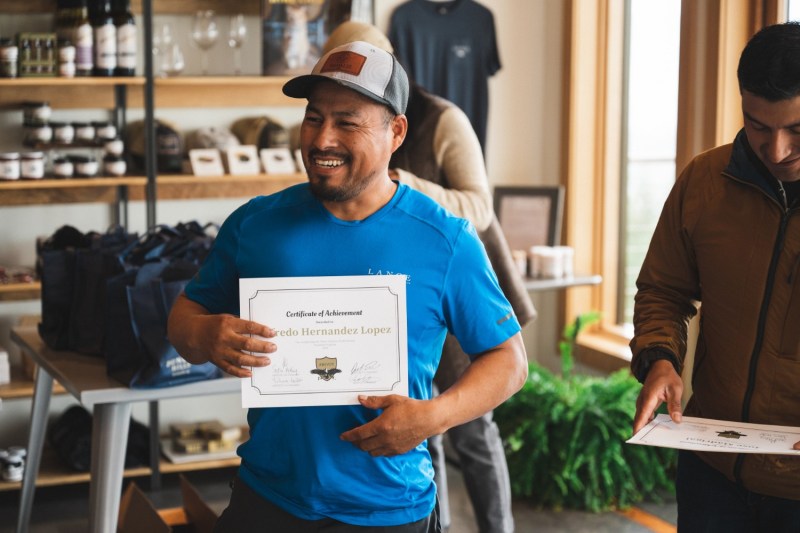The days of wine being just for old white men are over. The American wine business is finally changing with the times and with that comes an industry much more reflective of its surroundings. The Latinx community in particular has long been a part of the American wine landscape, but all too often overshadowed or marginalized.
Make way for AHIVOY, an organization based in the Willamette Valley looking to keep the industry properly represented. The organization’s mission is to strengthen the Oregon wine community by empowering vineyard stewards through education. It’s an incredible cause worthy of year-round attention and especially so now as we celebrate Hispanic Heritage Month.

How AHIVOY got its start
Deanna Ornelas is the president of AHIVOY (Asociación Hispana de la Industria del Vino en Oregon y Comunidad). She says it all started with a meeting between a few prominent Mexican members of the Oregon wine scene. That group included the late and great winemaker Jesus Guillen Jr. of Guillen Family Wines, Sofia Torres McKay of Cramoisi Vineyard, and Miguel López of Red Dirt Vineyard Labor.
“They wanted to help those in the vineyard doing some of the most important work, but not being given the same opportunities as others and kept coming back to education and how that helped them move ahead in the industry,” Ornelas says. “Soon they were recruiting others such as myself to start brainstorming ideas for a program or scholarship.”
Winemakers have long said that wine is made in the vineyard. If you don’t have good fruit, there’s really no point in fermenting it. Turns out, much of that vineyard work is done by the Latinx community. It’s extremely hard work that has historically been prone to poor pay and few options for upward mobility. But that’s changing.
“The community has been supportive and understands the importance and value of investing in those who tend the vines,” Ornelas continues. “When we recruit potential students it must be a whole house effort. What I mean by that is we make sure the vineyard steward’s employer is on board and understands the requirements of employees and of themselves. Collaboration with wineries is crucial to the organization’s success.”
How does AHIVOY work?
How does it all work? AHIVOY is volunteer-based and counts on tight partnerships with local educational institutions, in addition to wineries. Partner schools include nearby Chemeketa Community College and Linfield University.
“Both colleges have a wine program, which helped AHIVOY lay the foundational work for the 17-week program,” Ornelas says. “We are really getting into a rhythm with these colleges,” adding that it would be great to bring on more when there’s the capacity to do so.

The immersive professional training program sets participants up with the know-how to make waves in the industry, from a viticultural and enological perspective, and everything in between. There are focuses on marketing, logistics, business, compliance, and more. It’s bilingual and sets people up not just with a potential foray into the scene, but an actual career or upward pathway towards leadership. Beyond that, they’re set up with all the networking needs necessary and any resources available to take the next step. That step might include higher education, or even starting their own label.
Presently, there are a half dozen program instructors, including winemaking professors, Masters of Wine, and more. Last spring, 15 individuals graduated from the program, which includes six educational hours per week over 17 weeks. There are frequent trips to area wineries and grads can quality for continuing school credits. Scholarships for the program are made possible by donations from regional wine labels as well as occasional fundraising gatherings.
It wasn’t too long ago that formal training in wine was hard to find or too expensive to pull off. Now, thanks to organizations like AHIVOY, it’s becoming all the more accessible, showcasing just how big of an industry wine has become (close to an estimated $6B in 2019, including related businesses) and how eclectic its makeup actually is. To manage a vineyard or lead the branding efforts of a leading label is now an option for more people than ever, of all backgrounds and races.
What’s on AHIVOY’s horizon? Ornelas says it’s all about continuing to serve the community by offering the best programming that’s most beneficial for the future of vineyard stewards. “The organization hopes to one day scale the program in all U.S. wine regions,” she adds.
Further support
Want to help AHIVOY? There are many ways to do so, from donating to simply upping awareness and following the story via social media outlets like Facebook and Insta. There’s even an upcoming online auction taking place October 13th-15th.
“I’d encourage others to learn more about all that agricultural laborers do for our country and the skill required to work in vineyards,” Ornelas says. “I’d also ask others to take the time to sign petitions and spread awareness about agriculture laborers and their rights.”


